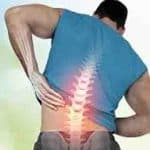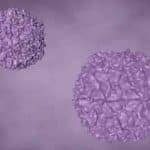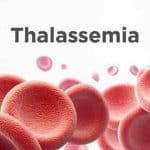ISLAMABAD, APRIL 05 (ONLINE): Strokes are serious vascular events that can sometimes result in death, and other times lead to varying levels of disability.Because of its severity, researchers want to continue identifying risk factors to help reduce stroke risk.
A recent study highlighted the impact of nontraditional risk factors on stroke outcomes.
It found that nontraditional risk factors — such as migraine and thrombophilia, a condition that predisposes a person to the formation of blood clots — played a crucial role in stroke risk, and contributed more to stroke risk in adults aged under 35 compared with traditional risk factors.
Stroke prevention is a crucial area of preventative health measures. Because of the dangers of strokes, people must know if they are at risk and what they may be able to do to modify their risk.
While younger individuals typically have a lower stroke risk, it is still important to note what risk factors affect younger populations, particularly as the consequences of a stroke can be lifelong.
A study recently published in Circulation: Cardiovascular Quality and OutcomesTrusted Source examined how nontraditional and traditional risk factors for stroke contributed to stroke in younger adults.
Researchers examined data from over 2,600 stroke cases and over 7,800 controls and examined how traditional and nontraditional risk factors contributed to stroke risk in adults aged 55 and younger.
The study found that nontraditional risk factors contributed to strokes most in adults under 35, and the risks from these nontraditional factors declined with age. These results highlight the importance of identifying nontraditional stroke risk factors, particularly among younger adults.
Stroke impact and risk factors
Stroke is such a dangerous health event because it can lead to brain damageTrusted Source. There are two main types of strokes: ischemic and hemorrhagic. In an ischemic stroke, there is some kind of blockage of the brain’s blood supply. In a hemorrhagic stroke, bleeding occurs in the brain, such as from a ruptured artery.
Multiple risk factorsTrusted Source can increase someone’s odds of experiencing a stroke, including having high blood pressure, diabetes, low levels of physical activity, and smoking.
Having a family history of stroke or an AB blood type can also increase risk. People can seek medical advice and guidance to help them determine their level of stroke risk.
The current researchers wanted to focus on some of the more nontraditional risk factors for stroke. They created the following breakdown for their research.
Traditional vascular risk factors included:
high blood pressure
diabetes
high cholesterol
sleep apnea
obesity
alcohol use disorder and substance use disorder
tobacco use
peripheral artery disease, coronary artery disease, and congestive heart failure.
Nontraditional risk factors included:
pregnancy and postpartum period
use of oral contraceptives
migraine
malignancyTrusted Source, HIV, and hepatitis
thrombophiliaTrusted Source, which increases the risk of blood clots
autoimmune diseases, vasculitis, and sickle cell disease
heart valve disorders
kidney failure.
How do nontraditional factors contribute to stroke risk?
This study was a retrospective case-control study, where researchers collected data from the Colorado All Payer Claims Database.
Researchers analyzed models stratified by age and biological sex to look at traditional and nontraditional stroke risk factors. This ultimately divided participants into three age group categories:
18–34-year-olds
35–44-year-olds
45–55-year-olds.
There were 2,628 stroke cases during the examined timeframe. Of this number, 73.3% were ischemic strokes, and 52% occurred in women. Researchers compared these stroke cases to 7,827 controls.
Researchers were more likely to see traditional risk factors linked to the stroke cases. The most common traditional risk factors they observed were high blood pressure, hyperlipidemia, and tobacco use.
Among men, the most common nontraditional risk factors were migraine, kidney failure, and thrombophilia. Among women, the most common nontraditional risk factors were migraine, thrombophilia, and malignancy — which refers to conditions where mutated cells invade healthy tissue.
Researchers further found that nontraditional risk factors contributed more to stroke risk in the youngest age group than traditional risk factors.
Among 18–34-year-olds, 31.4% of strokes among men and 42.7% of strokes among women were associated with nontraditional risk factors.
In contrast, traditional risk factors accounted for 25.3% of strokes among men and 33.3% of strokes among women. Researchers also found that the contributing risk from traditional factors peaked among participants in the 35–44-year-old category and that risk from nontraditional factors decreased with age.
Study author Michelle Hu Leppert, MD, MBA, assistant professor in the Department of Neurology at the University of Colorado School of Medicine, outlined the highlights of the research to Medical News Today:
“We wanted to better understand which risk factors were the most important contributors to stroke risk among young adults. We found that among adults 18 to 34 years of age, nontraditional risk factors were just as important as traditional risk factors. In fact, the younger the patient at the time of stroke, the more likely their stroke [was to occur] due to a nontraditional risk factor. We were surprised to find that migraine was the most important nontraditional stroke risk factor among adults [aged] 18 to 34 […] The association between migraine and strokes has been well established but this is the first study to show just how large this contribution could [be].”
The results do point to the importance of screening for nontraditional risk factors for stroke, particularly among younger individuals.
Adi Iyer, MD, neurosurgeon and interventional neuroradiologist at Pacific Neuroscience Institute at Providence Saint John’s Health Center in Santa Monica, CA, not involved in the research, commented that, “[i]n addition to well known risk factors for stroke such as hypertension, this study elucidated the lesser-known risk factors in young patients such as migraines, autoimmune disorders and thrombophilia.”
“This is an interesting study as it helps identify risk factors in young patients for stroke, which turn out to be just as important as already well understood risk factors such as hypertension and heart disease,” he told us.
“Younger patients with nontraditional risk factors such as autoimmune disorders, migraine, and thrombophilia should be screened by physicians for their stroke risk,” Iyer advised.
Follow the PNI Facebook page for the latest news and updates.








